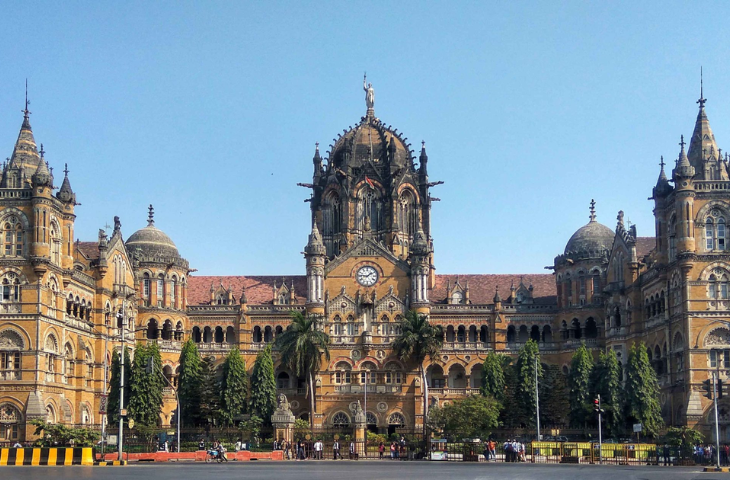Major Railway Zones in India: Indian Railways is one of the largest railway networks in the world. It connects every corner of the country and plays a major role in passenger and freight transport. To manage such a vast system, Indian Railways is divided into zones and divisions. Each zone is headed by a General Manager, and each division is managed by a Divisional Railway Manager. As of today, there are 18 railway zones in India, and each has its own headquarters. For railway exam aspirants, knowing these zones and their headquarters is very important because such questions are frequently asked in competitive exams.
What is a Railway Zone?
A railway zone is a large administrative unit under Indian Railways that manages train operations, passenger services, freight movement, and infrastructure within a particular geographical region. Some of the details are given below:
- Each zone is divided into smaller divisions.
- The headquarters of a zone acts as the main administrative center.
- This system helps Indian Railways run smoothly and manage such a big network efficiently.
How Many Railway Zones in India?
There are 18 major railway zones in Indian. Given below are the details:
| Railway Zone | Headquaters | Established Year |
| Central Railway (CR) | Mumbai, Maharashtra | 1951 |
| Eastern Railway (ER) | Kolkata, West Bengal | 1952 |
| Northern Railway (NR) | New Delhi | 1952 |
| North Eastern Railway (NER) | Gorakhpur, Uttar Pradesh | 1952 |
| North East Frontier Railway (NFR) | Guwahati, Assam | 1958 |
| Southern Railway (SR) | Chennai, Tamil Nadu | 1951 |
| South Central Railway (SCR) | Secunderabad, Telangana | 1966 |
| South Eastern Railway (SER) | Kolkata, West Bengal | 1955 |
| Western Railway (WR) | Mumbai, Maharashtra | 1951 |
| East Central Railway (ECR) | Hajipur, Bihar | 2002 |
| East Coast Railway (ECoR) | Bhubaneswar, Odisha | 2003 |
| North Central Railway (NCR) | Prayagraj, Uttar Pradesh | 2003 |
| North Western Railway (NWR) | Jaipur, Rajasthan | 2002 |
| South Western Railway (SWR) | Hubballi, Karnataka | 2003 |
| West Central Railway (WCR) | Jabalpur, Madhya Pradesh | 2003 |
| South East Central Railway (SECR) | Bilaspur, Chhattisgarh | 2003 |
| Kolkata Metro Railway (MR) | Kolkata, West Bengal | 2010 |
| South Coast Railway (SCoR) | Visakhapatnam, Andhra Pradesh | 2019 |
Overview of Major Railway Zones in India
We have created a table discussing the major features of the top railway zones in India. Check below for detailed information:
| Railway Zone | Headquarter | Key Features |
| Central Railway (CR) | Mumbai | Covers Maharashtra, Madhya Pradesh, part of Karnataka; major for Mumbai suburban services. |
| Eastern Railway (ER) | Kolkata | Covers West Bengal, Jharkhand, Bihar; famous for Howrah station. |
| Northern Railway (NR) | New Delhi | Largest zone by route km; covers Delhi, Punjab, Haryana, Himachal Pradesh, parts of UP; key stations: New Delhi, Amritsar, Chandigarh. |
| North Eastern Railway (NER) | Gorakhpur | Covers eastern UP & western Bihar; Gorakhpur station has world’s longest platform. |
| North East Frontier Railway (NFR) | Guwahati | Serves Northeast states; vital for integration & development of the region. |
| Southern Railway (SR) | Chennai | Covers Tamil Nadu, Kerala, parts of AP & Karnataka; operates the oldest long routes like Chennai–Mangalore. |
| South Central Railway (SCR) | Secunderabad | Covers Telangana, Maharashtra, AP, parts of MP; connects South with the rest of India. |
| South Eastern Railway (SER) | Kolkata | Covers West Bengal, Odisha, Jharkhand; famous for coal & mineral freight. |
| Western Railway (WR) | Mumbai | Covers Maharashtra, Gujarat, Rajasthan; vital for Mumbai suburban trains & Mumbai–Ahmedabad route. |
| East Central Railway (ECR) | Hajipur | Covers Bihar, Jharkhand, eastern UP; important for coal freight. |
| East Coast Railway (ECoR) | Bhubaneswar | Covers Odisha & parts of AP; important for mineral transport & eastern coast connectivity. |
| North Central Railway (NCR) | Prayagraj | Covers UP, Rajasthan, MP; called “Workhorse of IR” (Delhi–Kanpur heavy traffic). |
| North Western Railway (NWR) | Jaipur | Covers Rajasthan & parts of Punjab, Haryana; connects desert areas to rest of India. |
| South Western Railway (SWR) | Hubballi | Covers Karnataka, AP, parts of TN; important for Bengaluru division with heavy passenger traffic. |
| West Central Railway (WCR) | Jabalpur | Covers MP & parts of Rajasthan; key junctions: Jabalpur, Bhopal, Kota. |
| South East Central Railway (SECR) | Bilaspur | Covers Chhattisgarh, parts of Odisha & MP; major coal transporter. |
| Kolkata Metro Railway (MR) | Kolkata | India’s first & only metro zone; manages Kolkata Metro, the oldest metro in India. |
| South Coast Railway (SCoR) | Visakhapatnam | Covers parts of Andhra Pradesh; the newest zone is improving coastal connectivity. |
Why are Railway Zones Important for Exams?
Knowing the railway zones is very important for every railway aspirant, as questions are often asked in major railway exams. Some of the reasons why candidates must know the zones are as follows:
- They check your knowledge about the administrative structure of Indian Railways.
- These facts are easy to memorize and can fetch you quick marks.
- Questions are often asked in the format:
- “Where is the headquarters of South Eastern Railway?”
- “Which is the newest railway zone in India?”
Tips to Remember Railway Zones and Headquarters
We have created a proper way that will help candidates remember the railway zones and their headquarters. Follow the table below for details:
| State/Regions | Railway Zones & Headquarters | Mnemonic / Memory Trick |
| Maharashtra | 1. Central Railway (CR) – Mumbai 2. Western Railway (WR) – Mumbai | “Mumbai is Central to the West” (Mumbai has 2 zones) |
| West Bengal | 1. Eastern Railway (ER) – Kolkata 2. South Eastern Railway (SER) – Kolkata 3. Metro Railway (MR) – Kolkata | “Kolkata Eats South Meals” (ER, SER, MR) |
| Delhi (Capital Region) | Northern Railway (NR) – New Delhi | “Delhi is Northern Capital” |
| Uttar Pradesh | 1. North Central Railway (NCR) – Prayagraj 2. North Eastern Railway (NER) – Gorakhpur | “Prayagraj is Central, Gorakhpur is Long” (longest platform) |
| Bihar | East Central Railway (ECR) – Hajipur | “Hajipur is East Central” |
| Odisha / Chhattisgarh | 1. East Coast Railway (ECoR) – Bhubaneswar 2. South East Central Railway (SECR) – Bilaspur | “Bhubaneswar is East Coast, Bilaspur is Coal South-East” |
| Tamil Nadu | Southern Railway (SR) – Chennai | “Chennai is Southern Queen” |
| Telangana | South Central Railway (SCR) – Secunderabad | “Secunderabad Connects South” |
| Andhra Pradesh | South Coast Railway (SCoR) – Visakhapatnam | “Visakhapatnam is the South Coast” (newest zone) |
| Karnataka | South Western Railway (SWR) – Hubballi | “Hubballi is South Western” |
| Rajasthan / MP | 1. North Western Railway (NWR) – Jaipur 2. West Central Railway (WCR) – Jabalpur | “Jaipur is North-West, Kota (part of WCR) is West-Central” |
| Northeast (Assam) | North East Frontier Railway (NFR) – Guwahati | “Guwahati is North-East Frontier” |
For railway exam aspirants, remembering these zones is not just important for scoring marks but also for understanding how Indian Railways functions as a vast and organized system.
FAQs
As of today, there are 18 railway zones in India, and each has its own headquarters.
Knowing the railway zones is very important for every railway aspirant, as questions are often asked in major railway exams.
A railway zone is a large administrative unit under Indian Railways that manages train operations, passenger services, freight movement, and infrastructure within a particular geographical region.
The central railway was established in 1951.
The headquarters of Eastern Railways is in Kolkata.

Hello! This is Arijit Dutta. I am a skilled Content Writer at Oliveboard with nearly 3+ years of experience in crafting engaging, informative, and exam-focused content for the Railways Domain. With a strong command of language and a keen understanding of learner needs, I contribute significantly to Oliveboard’s mission of delivering high-quality educational resources. Passionate about clear communication and continuous learning, I consistently create content that helps government job aspirants achieve their goals. Outside of work, I enjoy playing cricket and listening to music, which helps me stay balanced and creative in my professional journey.
